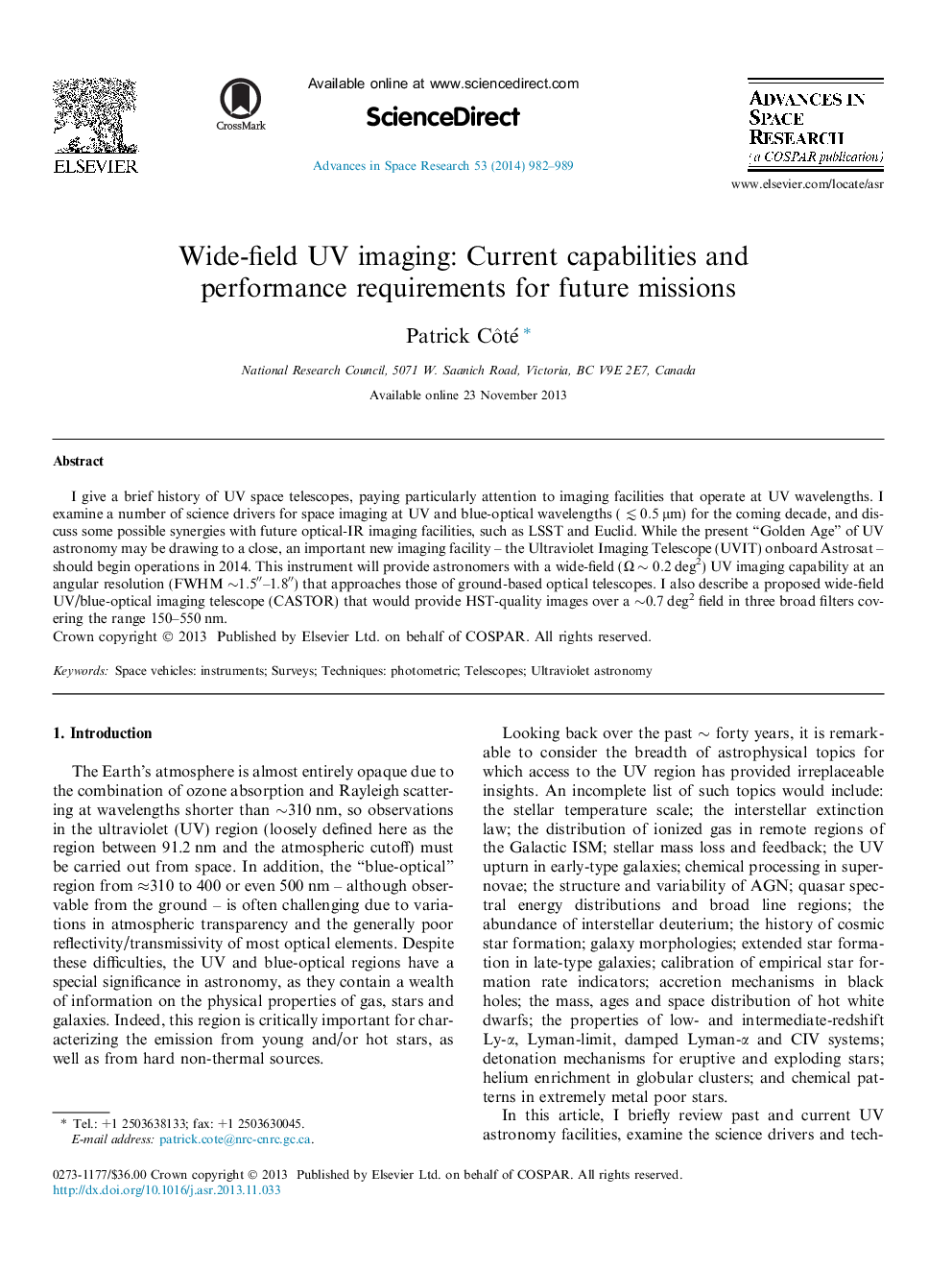| Article ID | Journal | Published Year | Pages | File Type |
|---|---|---|---|---|
| 10694443 | Advances in Space Research | 2014 | 8 Pages |
Abstract
I give a brief history of UV space telescopes, paying particularly attention to imaging facilities that operate at UV wavelengths. I examine a number of science drivers for space imaging at UV and blue-optical wavelengths (â²0.5μm) for the coming decade, and discuss some possible synergies with future optical-IR imaging facilities, such as LSST and Euclid. While the present “Golden Age” of UV astronomy may be drawing to a close, an important new imaging facility - the Ultraviolet Imaging Telescope (UVIT) onboard Astrosat - should begin operations in 2014. This instrument will provide astronomers with a wide-field (Ωâ¼0.2 deg2) UV imaging capability at an angular resolution (FWHM â¼1.5â³-1.8â³) that approaches those of ground-based optical telescopes. I also describe a proposed wide-field UV/blue-optical imaging telescope (CASTOR) that would provide HST-quality images over a â¼0.7 deg2 field in three broad filters covering the range 150-550 nm.
Related Topics
Physical Sciences and Engineering
Earth and Planetary Sciences
Space and Planetary Science
Authors
Patrick Côté,
